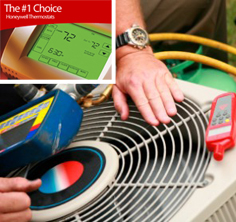3 Types of HVAC Maintenance Service Plans and their Benefits

Before you buy a HVAC Maintenance Service Plan, there are some basics you should consider.
All heating and cooling systems require some routine maintenance. One step to control energy costs is to schedule annual maintenance checks to make sure your unit is running efficiently. Most heating and cooling systems require very little owner maintenance. However, operating dirty equipment can result in an unnecessary loss of efficiency and can damage the equipment. You play a vital role in making sure your heating and cooling system continues to operate at peak performance.
There are many names for HVAC maintenance service agreements such as Planned Service Agreement, HVAC Maintenance Contract, Complete Comfort Agreement, and Comfort Plan. But, they are all basically the same thing; a contract between you and a contractor to maintain your HVAC equipment and avoid expensive, inconvenient, emergency calls. Most of them omit the word “contract” but that is what they are.
These contracts have two main purposes:
- First, to ensure that preventive maintenance is performed on the equipment. A clean HVAC unit has fewer repair calls than one that is not maintained. This is so that the parts and the equipment lasts as long as possible.
- Second, a clean HVAC unit operates more efficiently and saves you money on your utility bills.
Most Equipment Manufactures require routine maintenance for full warranty benefits.
Contractors usually offer three levels of agreements:
- The most basic plan usually includes an AC unit checkup and a furnace checkup.
- The next level of coverage usually includes the checkups, but adds some value such as free filters, no labor charges for minor repairs and priority service.
- The highest level of contract is the crem-dala-crem and includes the checkups, and added value of the previous plan, but makes you a VIP customer by adding no labor charges for minor repairs and discounted parts.
As the plan level goes up the price goes up. The basic plans can cost up to $200 and the highest level can be $300 to $500 PER YEAR.
So, how do you decide?
Consider this, if your unit is more than 10 years old and you have had a lot of costly repairs, it might make more sense to replace the unit then just purchase a planned maintenance agreement. However, if your unit is fairly new and in good working order, it makes good sense to buy the “insurance” and take the step to control energy costs and schedule annual maintenance checks to make sure your unit is running efficiently and operating at peak performance.







